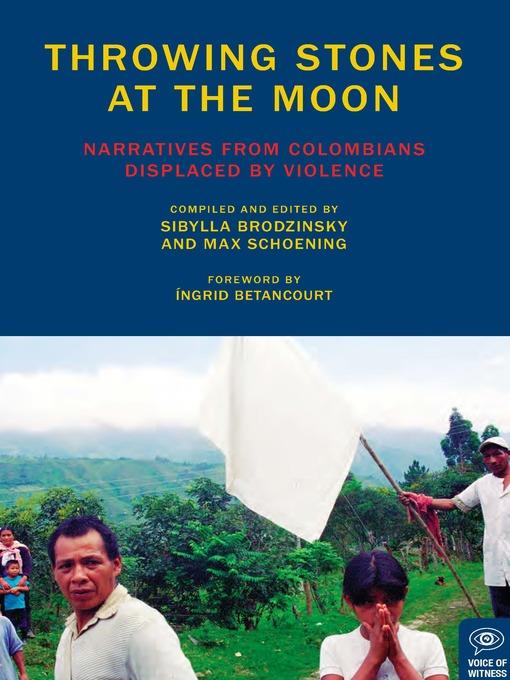
Throwing Stones at the Moon
Narratives From Colombians Displaced by Violence
کتاب های مرتبط
- اطلاعات
- نقد و بررسی
- دیدگاه کاربران
نقد و بررسی

October 22, 2012
Human rights journalists Brodzinsky and Schoening geographically organize intimate oral histories from individuals living through pervasive violence among Colombia's drug cartels, military forces, and rebels. Often astonishing quotes double as headings ("A Pretext to Throw Me in The River"; "I'd Go Alone and Sit Down Next to Their Tombs"; "I'm Going to Start Killing Indians as if They Were Fish"), piquing readers' curiosity and conscience. The editors document the conflict's tangible impactsâdestruction of villages, deaths, and physical injuriesâand emphasize stories embodying two ideas: violence seems to permeate the air many Colombians breathe, yet they show "tenacity to persevere and survive." For Amado VillafaÅa, a member of the indigenous Arhuaco people, "the conflict begins with Christopher Columbus"; despite this, "we're not resentful." In childhood, Sergio DÃaz heard bomb explosions and "got so scared face changed from this color to that." Five years later, he stepped on a landmine, losing his leg. Readers concerned with human rights and Latin American politics will find this account of violence and survival both sad and inspiring. Maps.

July 1, 2012
Bleak first-person accounts of violence and displacement in Colombia over many decades. In a lawless struggle for power over the rural farmers and laborers who make up the landscape of this deeply scarred, war-torn country, left-wing guerrillas emerging in the 1960s and '70s and the paramilitary right-wing opposing them from the '80s onward, fueled by the drug profit and mafia cartels, have been responsible for thousands of senseless deaths and the upheaval of families and villages. Editors Brodzinsky and Schoening have compiled a useful, moving set of oral histories of this horrendous period of bizarre, seemingly arbitrary killings and intimidation. Instilling fear seemed to be the aim of the sudden appearance within a village of the ragtag left- or right-wing paramilitary men, who dragged people out of their homes to rape, maim and murder. Remembering the terror visited on her village of El Salado forms Emilia Gonzalez's opening narrative--the paramilitary forces raped her 12-year-old daughter and herded the villagers onto the soccer field for a killing spree. Later, the victims might spot their tormentors in the army purportedly guarding the villages; there seemed to be no end to the absurdity of the violence. Death threats, forced planting of coca, bombings, maiming by mines, deliberate dismemberment, assassination of trade unionists and people seeking government redress and protection, and persecution of Colombian refugees who fled to Ecuador--these stories express a horrific experience and plea for humanitarian intervention. A helpful history of Colombia by Winifred Tate, timeline and glossary of terms close this extensive, poignant study. A valiant effort of research and consolidation.
COPYRIGHT(2012) Kirkus Reviews, ALL RIGHTS RESERVED.

























دیدگاه کاربران